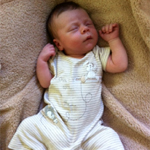Could your running shoes be making you ill?
When was the last time you changed your running shoes? If you’re struggling to remember, this could be a sign that you need to swap out your well-worn sneakers for a new pair. It might sound simple, but it could make all the difference between being in well health or ill health.
As exercise-lover and Osteopath Denise Callaghan explains: “Running in worn out trainers can result in injuries to your legs, lower body and your back for that matter.
“That’s because running shoes are specifically made to cushion your joints, support your frame and absorb the shock as your feet pound the pavement during this high impact exercise.”
But over time, running trainers can lose their shock absorption, cushioning and support. Which in turn forces your body to take on the strain as your tread the tarmac. “All of which can lead to some pretty painful but avoidable injuries,” Denise adds.
What injuries can poorly fitting running trainers cause?
Muscles feeling extra tired? Suffering from a pain in your shins? Or do your knees hurt?
Pain or soreness before, during or after running could be a result of picking up an injury like:
- Achilles tendonitis – this is an overuse injury of the Achilles. It can happen if your trainers aren’t supporting you and instead, other areas of your body, like your Achilles heel is picking up the slack.
- Plantar fasciitis – described as an inflamed or swollen plantar fascia. You might experience a pain at the bottom of your foot, arch and around your heel.
- Ankle sprains – this can happen if the support or treads of your trainer are loose or uneven.
- Lower back pain – your feet are your foundation of the body. If badly unsupported, it can cause an imbalance in your entire posterior chain, including your back.
- Runner’s knee – this is also known as Chondromalacia Patellae and is a condition where the cartilage on the under surface of the kneecap deteriorates and softens. It can be caused by a certain way of walking, or running.
- Shin splints – more formally referred to as medial tibial stress syndrome or MTSS for short, this is an achy feeling in the bones running down the front of your lower leg.
So, how do you know when your shoes need changing?
Nowadays, the best running trainers have been specifically crafted for all different types of runners in mind. For example, did you know women’s running shoes differ to men’s running shoes? That’s because (generally speaking) women have a wider forefoot and toe area with a narrower heel.
So how do you know if it’s time to swap them? Some pointers include:
- If your treads are worn out
- You spot uneven wear and tear on your shoes, including your soles
- You get pain when running
- You notice your shoes don’t feel like they used to
How often should you change your shoes?
In the running world, it’s believed you should replace your running treads every 300-500 miles. Although this will of course depend on one runner to the next. The surface you run on, your running style, how often you run, and your body weight will also have an impact.
“In my clinic I have dealt with a number of problems caused by poor running attire,” Denise says. “Depending on the symptoms, I can treat clients in a number of ways.”
How osteopathy can help
- Depending on the diagnosis and your age and fitness we can use a variety of electrotherapy, gentle massage and manipulative techniques to reduce pain, inflammation, increase the mobility of the joints and the flexibility of the muscles in the foot.
- If appropriate we may use acupuncture to reduce pain and inflammation.
- We will often look at muscles and joints in the lower limb, the knee, hip and lower back and may treat any joint restrictions and muscle tightness we find there. Often improving the movement in the joints of the lower will help the foot and ankle function better.
- We may offer specific balancing, strengthening or loosening exercises.
- We may offer advice on strapping and brace supports, footwear and any lifestyle factors that might be hindering healing. We may refer you to a podiatrist for their opinion and specialist foot supports.
- X-rays, scans or other tests may be required to make a diagnosis and we may refer you to your GP for any additional investigations and treatment such as advice on pain killers and anti-inflammatory medications.
If you are still struggling with pain before, during or after running please do get in touch.
To book an examination to determine the causes, possible treatment and practical advice on how to manage the condition and exercise safety to prevent recurrence, head here.
“Afterall prevention is better than a cure,” Denise adds.





















